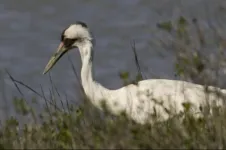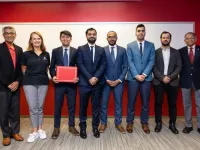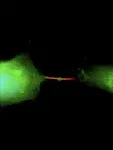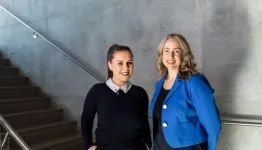(Press-News.org) Governments, nonprofit organizations, and other groups spend roughly $100 billion a year to support conservation. Restrictions on where conservation funds can be spent, however, prevent organizations from focusing on the most promising opportunities to help species. A new study led by researchers at the University of Tennessee, Knoxville, suggests a way to improve the situation.
“There are plenty of conservation bargains still available in the United States,” said Paul Armsworth, professor in the UT Department of Ecology and Evolutionary Biology and lead author of the study. “Some peak biodiversity spots are in locations where, if left unprotected, the threats facing species are more pressing, but the cost to protect habitat in these areas are lower.”
According to the research team, this combination of factors means biodiversity from conservation projects offers a high return on investment, but limitations attached to funding often dictate where funds will be concentrated. Private donors, for example, favor conservation projects near where they live, which may not overlap the best places to protect species. As a consequence, many of the best opportunities to protect species miss out on funding.
“The end-result is like giving food stamps to support a family, but then requiring they spend a portion of those funds in every section of the grocery store. The support is helpful, but if we let conservation organizations focus on where they can do most good, their impact will be so much larger,” Armsworth said.
Conservation scientists have pointed out this disconnect before, but tools used by conservation organizations to prioritize where to work fail to include restrictions on conservation dollars. Additionally, many policy-makers and private donors remain unmoved by conservationists’ pleas for unrestricted funds.
“Although completely unrestricted funds are the most desirable, they are hard to come by,” Armsworth said. “Our approach addresses this reality and shows public and private funders what allowing even a little more flexibility would offer. Perhaps a private donor could be asked to support conservation of a river system or migratory species and allow some funding to flow to projects in neighboring states that are key to its protection.”
By drawing on the concept of exchange rates, just like a currency exchange counter at the airport, researchers demonstrate the available gains for biodiversity when funds can be moved from one place to another. The team showed that adding even a little bit of funding flexibility in conservation grants greatly improves outcomes for species under threat.
“This paper underscores the importance of discretionary funding that is flexible and can be applied to the highest priority and impactful projects, regardless of their geography,” said Joe Fargione, The Nature Conservancy’s Science Director for North America.
Armsworth, P.R. et al. 2023 Multiplying the impact of conservation funding using spatial exchange rates. Frontiers in Ecology and the Environment, doi:10.1002/fee.
END
The currency of conservation
A little flexibility goes a long way in nature’s bureau de change
2023-10-06
ELSE PRESS RELEASES FROM THIS DATE:
ORNL is poised to have a major role in the future of nuclear physics
2023-10-06
The Department of Energy’s Oak Ridge National Laboratory, a bastion of nuclear physics research for the past 80 years, is poised to strengthen its programs and service to the United States over the next decade if national recommendations of the Nuclear Science Advisory Committee, or NSAC, are enacted.
“The 2023 Long Range Plan lays out a compelling vision for nuclear science in the United States under multiple budget scenarios,” said Gail Dodge, physicist at Old Dominion University and chair of the NSAC. “Implementation of the Long Range Plan’s ...
UH energy competition focuses on innovation, commercialization and sustainability
2023-10-06
The world is full of good ideas, but only some of them become viable and real.
“You don’t see the full impact of a good idea until someone figures out a way to convert it to a usable product or service that has value, brings it to market and makes money off of it – this is what makes it a sustainable business,” said S. Radhakrishnan, a retired University of Houston business professor and coordinator of UH Energy’s Innovation Commercialization Competition. “To have a successful energy transition, we need many innovative ideas to be commercialized.”
Keeping this in mind, Radhakrishnan worked hard to grow the second annual Energy Innovation Commercialization ...
Remnant of cell division could be responsible for spreading cancer
2023-10-06
Once thought to be the trash can of the cell, a little bubble of cellular stuff called the midbody remnant is actually packing working genetic material with the power to change the fate of other cells — including turning them into cancer.
It’s a surprise to many people, according to Ahna Skop, a University of Wisconsin–Madison genetics professor, that when one cell divides into two, a process called mitosis, the result is not just the two daughter cells.
“One cell divides into three things: two cells and ...
CPR education drive expanded to London during the 2023 NFL London Games
2023-10-06
Photos will be added to the release link as available.
On average worldwide, fewer than one in every ten cardiac arrest victims outside of the hospital survive.[1] Too many people do not survive from cardiac arrest because those around them are not educated on the lifesaving skills of cardiopulmonary resuscitation (CPR). Knowing CPR can be a lifesaving tactic. On October 7, 2023, the Chasing M’s Foundation - professional football player Damar Hamlin’s charity - the American Heart Association, the British Heart Foundation ...
Possible tool discovered to diagnose common contributor to vascular dementia
2023-10-06
A research team led by the Keck School of Medicine of USC has discovered that a non-invasive eye exam may be a possible tool for screening Black Americans and other people from underdiagnosed and high-risk populations for cerebral small vessel disease, a major contributor to cognitive impairment and dementia. After Alzheimer’s disease, vascular dementia, associated with impaired blood flow to the brain, is the second most common dementia diagnosis.
“Most people with cerebral small vessel disease are not diagnosed until significant brain damage has occurred. Damage to the brain cells is not reversible.” ...
Research reveals disparities in access to quality parks
2023-10-06
In urban areas throughout the United States, it is imperative for all communities to have equal access to high quality parks. These parks can have many benefits for the physical and mental well-being of the residents who live in close proximity to the urban green spaces. For instance, they are a place to socialize and exercise outdoors while also providing vegetation nearby, which can help reduce urban heat.
Yet, in the City of Philadelphia, not all parks are created equal, according to a new study from the University of Delaware.
Using a machine learning algorithm to analyze 285 ...
Offspring of teen, young adult women with cancer history more likely to have birth defects
2023-10-06
The offspring of adolescent and young adult women with a history of cancer face a higher risk of birth defects, according to new research from UTHealth Houston.
A study led by Caitlin C. Murphy, PhD, MPH, associate professor of health promotion and behavioral sciences at UTHealth Houston School of Public Health, was published recently in Cancer Epidemiology, Biomarkers & Prevention.
“Concerns like the health of future children are at the top of mind for many young adults diagnosed with cancer, but they are already so overwhelmed at the time of diagnosis with ...
Benefits of psychedelics in obsessive-compulsive disorder: in search of evidence
2023-10-06
Intrusive thoughts, involuntary repetition of undesirable gestures and behaviors combined with high anxiety... Obsessive-compulsive disorder (OCD), a disabling condition, affects around 2% of the population, regardless of age. It is a strong vector of isolation since patients disproportionately focus on various obsessions—to the detriment of relationships, work, and leisure.
Treatment mainly consists of cognitive-behavioral therapy (CBT) that allows patients to readjust their thought patterns, combined with antidepressants. Unfortunately, the effects are slow to appear, and 30 to 40% of patients do not respond at all. “In this context, an option ...
World-first research breakthrough sparks new hope for bowel cancer patients
2023-10-06
Every year, over 15,500 Australians are diagnosed with bowel cancer, and it is the second leading cause of cancer deaths in the country. Over 1,700 (one in ten) of those diagnosed are young Australians aged under 50, and this incidence is increasing.
There is an urgent need to discover more effective treatments and improve bowel cancer screening, particularly for early-onset bowel cancer (those aged 25-49 years). Australians born in 1990 onwards have double the risk of developing bowel cancer compared with those born in 1950. These younger bowel cancer patients often have poorer outcomes as they typically present with late-stage ...
3D genome architecture influences SCID-X1 gene therapy success
2023-10-06
Patients with X-linked severe combined immunodeficiency disorder (SCID-X1), sometimes called “bubble boy disease,” are born with a defective gene that prevents them from producing immune cells. Gene therapy from St. Jude Children’s Research Hospital restored the immune system in multiple infants with SCID-X1 in 2019 by supplying copies of the corrected gene. Through ongoing efforts to monitor patient safety, St. Jude scientists recently documented where the gene copies integrate into patient DNA, providing a foundation to understand the biology and safety of using lentiviral vectors. The findings were published today in Science Advances.
“We ...
LAST 30 PRESS RELEASES:
New expert guidance urges caution before surgery for patients with treatment-resistant constipation
Solar hydrogen can now be produced efficiently without the scarce metal platinum
Sleeping in on weekends may help boost teens’ mental health
Study: Teens use cellphones for an hour a day at school
After more than two years of war, Palestinian children are hungry, denied education and “like the living dead”
The untold story of life with Prader-Willi syndrome - according to the siblings who live it
How the parasite that ‘gave up sex’ found more hosts – and why its victory won’t last
When is it time to jump? The boiling frog problem of AI use in physics education
Twitter data reveals partisan divide in understanding why pollen season's getting worse
AI is quick but risky for updating old software
Revolutionizing biosecurity: new multi-omics framework to transform invasive species management
From ancient herb to modern medicine: new review unveils the multi-targeted healing potential of Borago officinalis
Building a global scientific community: Biological Diversity Journal announces dual recruitment of Editorial Board and Youth Editorial Board members
Microbes that break down antibiotics help protect ecosystems under drug pollution
Smart biochar that remembers pollutants offers a new way to clean water and recycle biomass
Rice genes matter more than domestication in shaping plant microbiomes
Ticking time bomb: Some farmers report as many as 70 tick encounters over a 6-month period
Turning garden and crop waste into plastics
Scientists discover ‘platypus galaxies’ in the early universe
Seeing thyroid cancer in a new light: when AI meets label-free imaging in the operating room
Neutrophil-to-lymphocyte ratio may aid risk stratification in depressive disorder
2026 Seismological Society of America Annual Meeting
AI-powered ECG analysis offers promising path for early detection of chronic obstructive pulmonary disease, says Mount Sinai researchers
GIMM uncovers flaws in lab-grown heart cells and paves the way for improved treatments
Cracking the evolutionary code of sleep
Medications could help the aging brain cope with surgery, memory impairment
Back pain linked to worse sleep years later in men over 65, according to study
CDC urges ‘shared decision-making’ on some childhood vaccines; many unclear about what that means
New research finds that an ‘equal treatment’ approach to economic opportunity advertising can backfire
Researchers create shape-shifting, self-navigating microparticles
[Press-News.org] The currency of conservationA little flexibility goes a long way in nature’s bureau de change






